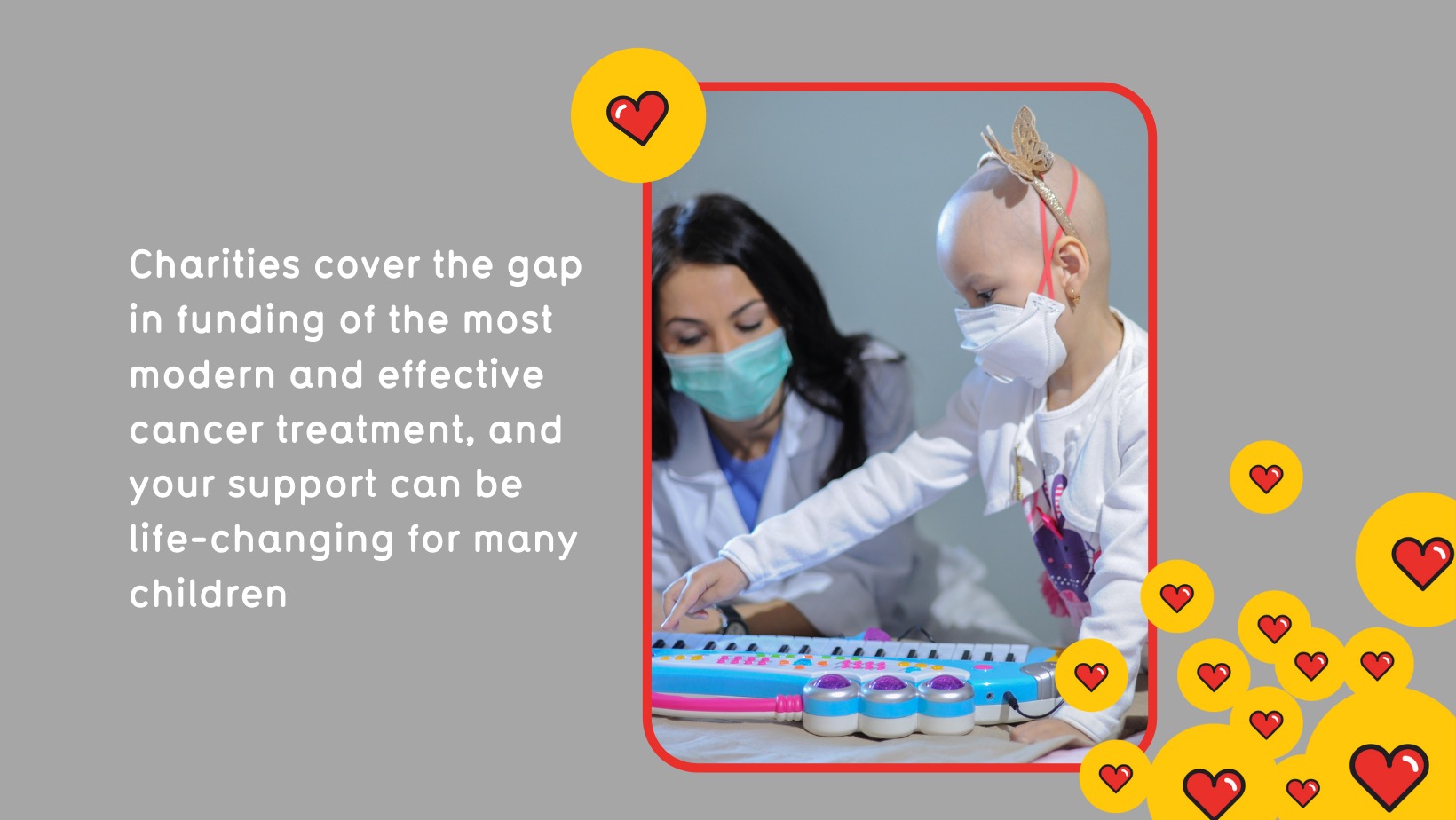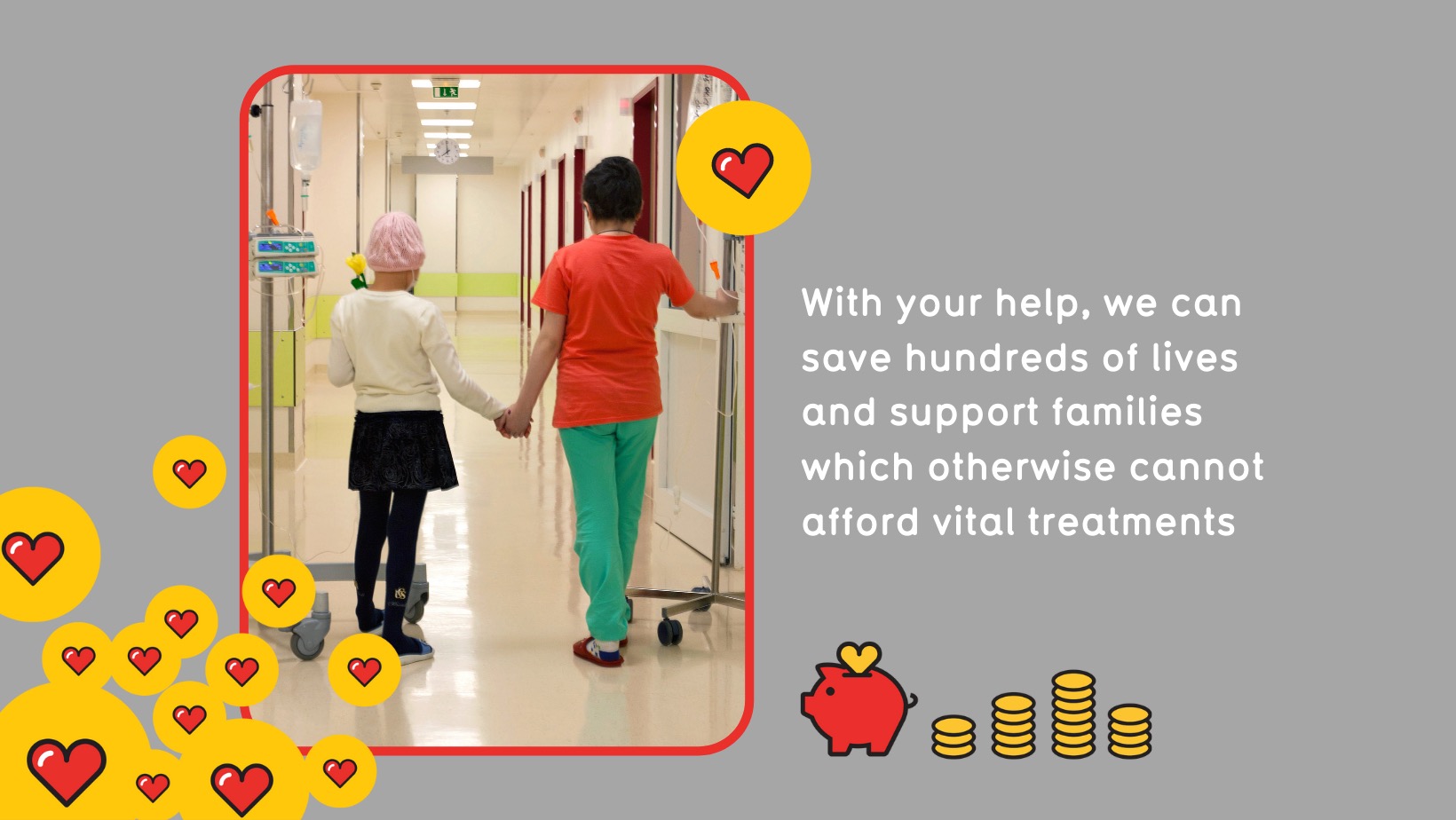 CHILD CANCER IN RUSSIA
CHILD CANCER IN RUSSIA
Every year about 4,500 children get sick with cancer and serious blood diseases in Russia. Approximately 3,000 kids diagnosed are younger than 14.
On average one in every 600 children and teens will have cancer or a serious blood disease before reaching 18.
Leukaemia is the most common type of childhood cancer. The peak incidence of childhood leukaemia (specifically, acute lymphoblastic leukaemia) is mostly observed in children aged between two and six.
Financial gap covered by charities
In Russia, treatment of cancer patients is paid for by the state at a certain tariff, which hasn’t changed for more than a decade. Over the years, paediatric oncology has advanced to a great extent, and more advanced technologies have appeared that have not been considered within this outdated tariff. As such, the financial gap between the base rate and the world standard of treatment has to be covered by charities. Unfortunately, it can take years to change this tariff, as the bureaucracy extremely slows down the process.
Another issue is that the state tariff for the treatment of certain diseases, for instance, leukaemia, is equal in both federal hospitals in Moscow and regional hospitals in smaller towns. In addition to medicines, it includes the salaries of specialists, which differ greatly by region, and the costs of operating hospital buildings, which are not comparable between clinics. For example, the Dmitry Rogachev National Medical Research Centre in Moscow has a separate floor for ventilation units that ensure quality air for patients. This doesn’t exist in an ordinary regional hospital, but the state tariff is standardised and calculated according to the number of patients treated. Which means the Centre has to rely on support of charitable donations to cover the gap in funding and to be able to save more lives.

Survival rates
Childhood cancer survival rate in western countries with most advanced medicine is about 80-90%.
In experts’ opinion* the average survival rate within the field of paediatric oncology in Russia is closer to 70%. The largest, most advanced Russian medical centres can reach 80% but there are clinics with an indicator of 50-60%.
It is a profound improvement compared to the post-Soviet times. Russian paediatric oncology has taken a massive step forward over the last 30 years when a mere 5–10% of children with leukaemia and other oncological diseases were cured in the early ‘90s**. A breakthrough occurred when Russian oncologists started training in the West and gained experience from their foreign colleagues.
It is important to remember that when it comes to the chance of recovery, the data on a specific disease must be considered. For example, acute lymphoblastic leukaemia has a survival rate of up to 90-95%, but glioblastoma has a rate of 5%. This range is huge: from almost completely curable diseases to diseases which have had practically no progress in years.
* Dr. Mikhail Maschan (MD, DSc): The path you must walk
** Dr. Galina Novichkova (MD, DSc): Every pound pays for someone’s life
Cancer is curable, and you can help
The experts estimate that in patients who first fell ill with a standard tumour the absence of just one medication from the treatment regimen can reduce the chances of recovery by several tens of percent.
“Take high-risk stage 4 neuroblastoma therapy. If a full treatment program is carried out with chemotherapy, radiation and transplantation, the chances of recovery are about 45%. But if you add dinutuximab immunotherapy to this combination, the chance increases to 65%. The loss of one element “kills” 20% of the success, which translates to two lives saved out of ten. That’s a lot!” emphasised Dr Mikhail Maschan (MD, DSc), Deputy Director General of the Dmitry Rogachev National Medical Research Centre.

Erwinase
About 10% of Russian children diagnosed with acute lymphoblastic leukaemia need Erwinase, a modern medication unavailable in Russia. One pack of Erwinase (10 units for injections) costs about £5,000.
Based on doctors’ estimation, paediatric haematology departments in Russia annually need about 240 packs of Erwinase costing around £1,200,000. The Russian state funding does not cover this rare, life-saving medication, that is why Gift of Life fundraises to buy Erwinase and other life-saving medications for our patients. Read more about our Medications programme here.
Bone marrow transplant
Every year, approximately 1,000 of children with cancer in Russia may need bone marrow transplantation.
There have been significant advancements in transplantation in the past ten years. The number of transplants in paediatrics in Russia has increased by about 80% with the opening of the Dmitry Rogachev Centre and departments of transplantation in regional children’s hospital in Yekaterinburg and the Morozov children’s city hospital in Moscow.
Transplantation expose patients to very serious risks and can be fatal. But thanks to new technologies, that risk has considerably lessened in recent years. A decade ago, “transplant-related mortality” was approximately 15%. Now the leading cancer clinics have managed to significantly reduce this figure.
For example, the Dmitry Rogachev Centre has recently achieved 2-3% transplant-related mortality rate among patients with leukaemia. Such improvement seemed unbelievable not that long ago.
Unrelated donors are still needed
The recent development of transplant technologies from parents (haploidentical transplantation) also contributed to the growth of the number of annual transplants. However, Gift of Life patients regularly need the charity’s support with unrelated bone marrow donors search in international registries as dozens of them don’t have matching donors among relatives. Especially when rare genotypes are involved.
The search in international registries costs around £4,500-5,000. Graft harvesting – taking bone marrow cells from a donor – costs between £9,000 and £12,000. This covers donor’s journeys to hospital and accommodation, doctor’s fee, paid leave for the donor, and medical insurance. The donor does not get any financial reward for this selfless help.
The search for unrelated donors in international registries and graft harvesting outside Russia are not covered by the state funding. As cancer patients’ family wages get quickly drained by high costs of treatments, in most cases, it is charity organisations like Gift of Life that cover the costs of the procedure from donations.
Please support our programme work and help more children live!
